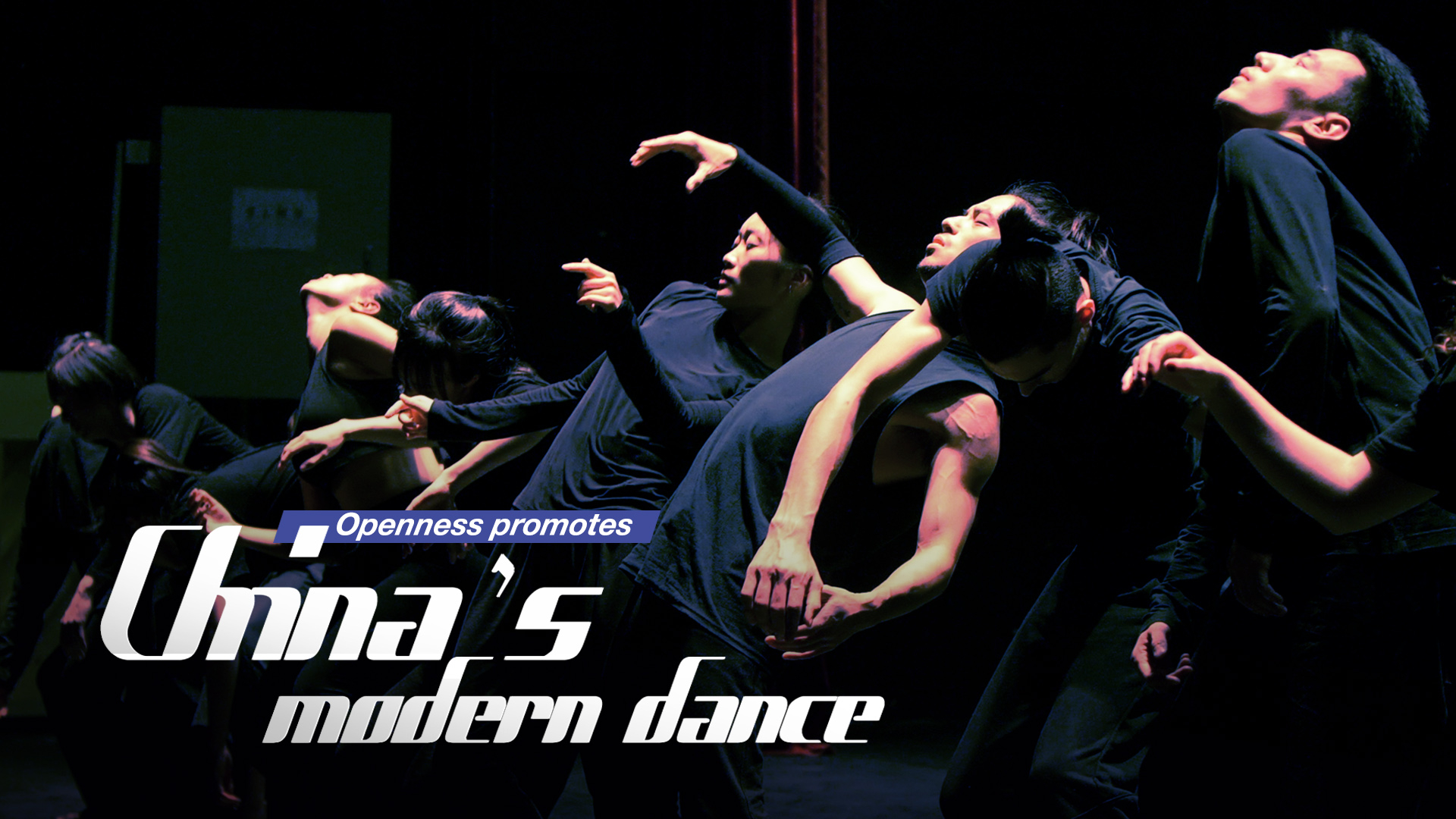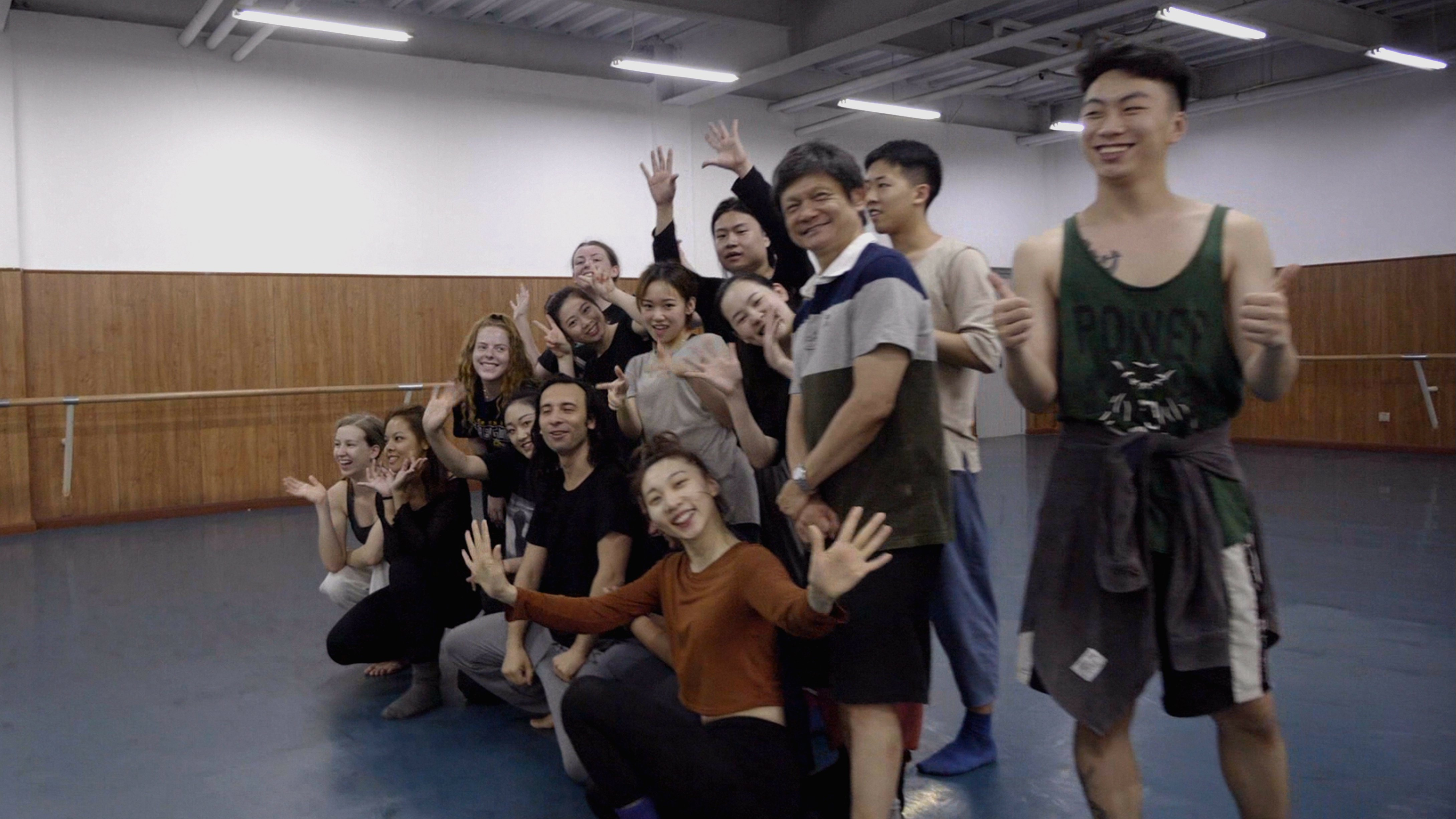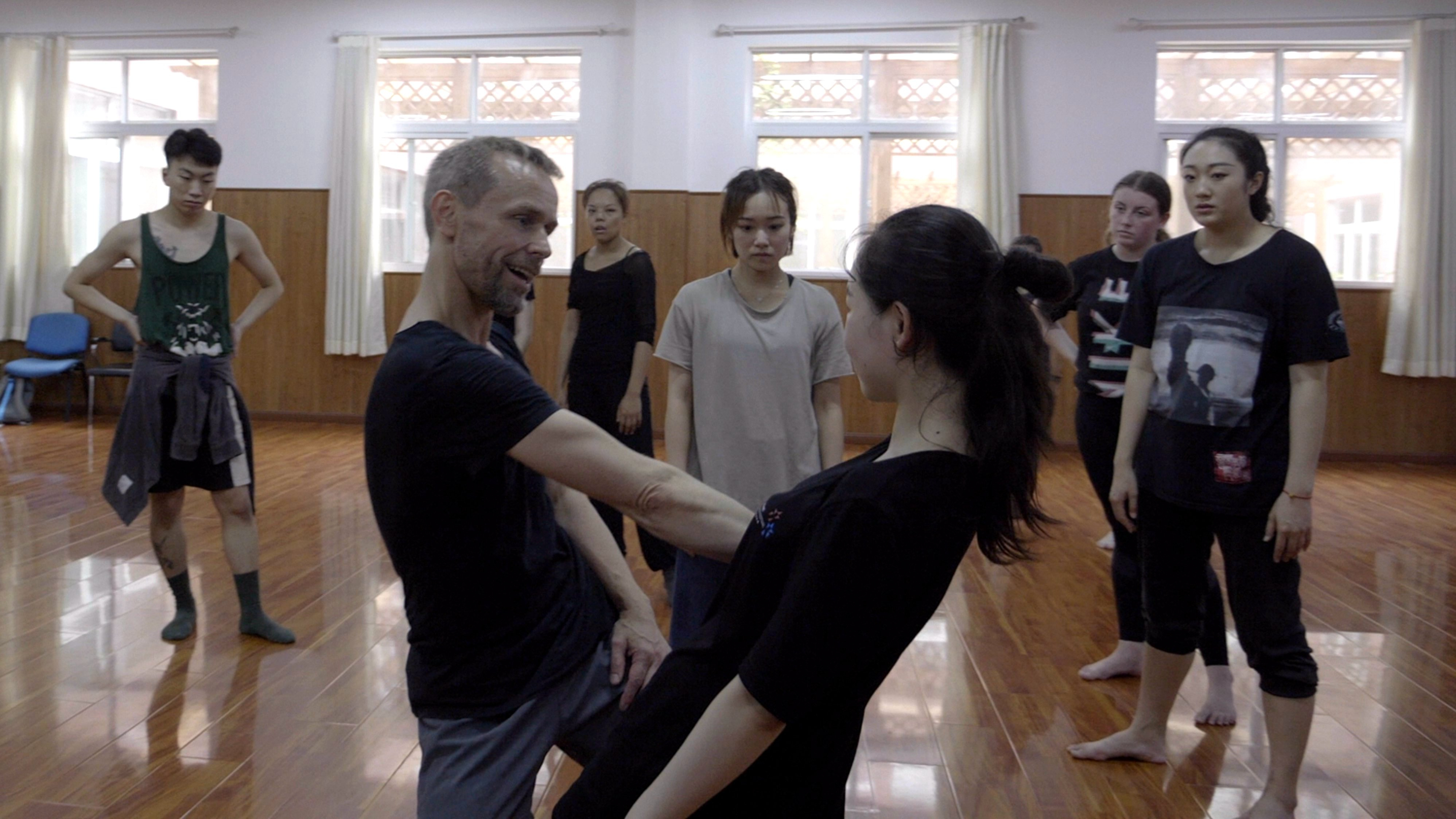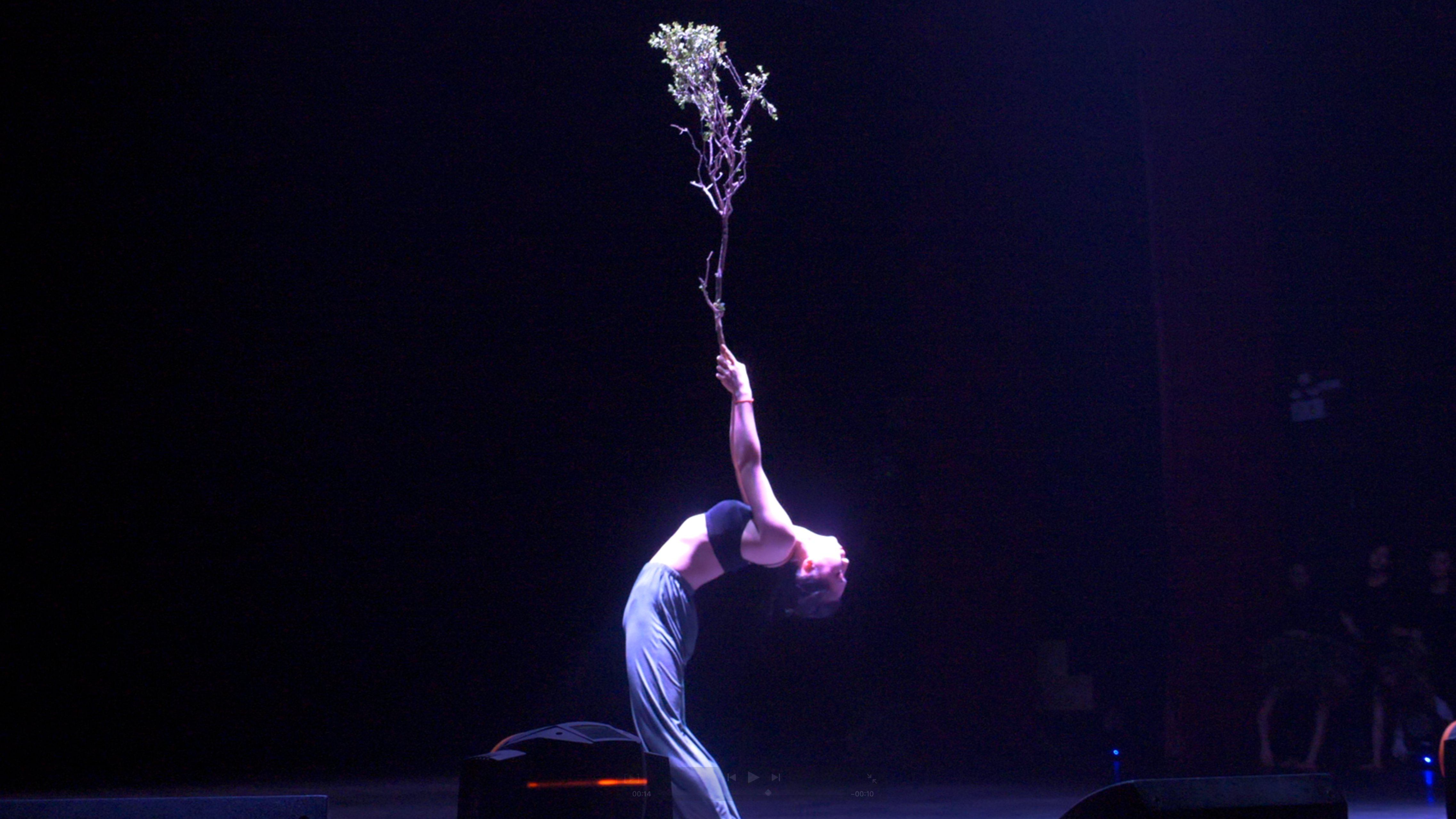

In late July, the 12th Beijing Dance Festival, initiated by BeijingDance/LDTX, attracted dance artists and lovers from around the world to gather in China's capital. The first week featured a modern dance educational camp and the second week presented performances.
"Modern dance is always associated with the world. It is not closing the door and working in the school itself. It has to reach out to the world," said Willy Tsao, artistic director of BeijingDance/LDTX, a leading modern dance company in China.
Modern dance develops in China
In the Beijing dance school where the dance camp takes place, Willy Tsao sits in front of a computer. On his desk, brochures and paper files pile up. Dance teachers stop by at his office for a talk or a rest during class breaks. His popularity points to the fact that Tsao is, in fact, one of China's pioneers in modern dance and the creator of many firsts in the field.
This year's dance camp invited 16 international guest teachers and over 100 international students. The six-day systematic course covers a wide range of practical activities including modern dance techniques, choreography, impromptu dance and performance.
"Each dance teacher brings a variety of techniques, styles and different ways of thinking. Through training (with international dance instructors), students get an idea of what's going on in the world, so that they can have a panoramic view of modern dance," said Tsao.

Willy Tsao (third from right) poses for a photo with participants of the dance camp of Beijing Dance Festival, July 22, 2019. /CGTN Photo
Born in Hong Kong in 1955, Tsao fell in love with modern dance during high school after seeing a modern dance performance by American dancers. He then spent much time studying modern dance in the U.S. and established Hong Kong's first professional modern dance company, the City Contemporary Dance Company, in 1979.
As modern dance was developing in the Chinese mainland, he was invited to be the first artistic director of the mainland's first professional modern dance company, the Guangdong Modern Dance Company that was founded in 1992, and established the mainland's first privately-run dance company, BeijingDance/LDTX in 2005.
In 2008, BeijingDance/LDTX launched the predecessor of Beijing Dance Festival, Beijing Contemporary Dance Performance Week, and developed it into one of the most influential modern dance events in China.
Chinese color in dance is worth cherishing
"A lot of people think that modern dance is a western art form, but actually it is a human art form," said Tsao.
Danish dancer and choreographer Jens Bjerregaard is one of the 16 guest teachers in the festival's dance camp. Working and living in Paris, he has been in teaching and choreographing for companies, universities and professional dancers around the world, including China, in the past decade.
After one of his first visits to China, Bjerregaard invited a Chinese dancer to work with him in Denmark. When he taught the Chinese dancer his material, the Chinese dancer always added his own tradition. "I made a straight line, but he would always bend in the end. That's always interesting to see," said Bjerregaard.
"There is a different thinking and different philosophy. That's part of culture. But it's just the color. It's not something that you find it's different and unable to be with each other. It's just a slightly different coloring of things that you can always recognize as the Chinese color," said Bjerregaard.

Jens Bjerregaard teaches dance skills in his class at the dance camp of Beijing Dance Festival, July 19, 2019. /CGTN Photo
Nanette Hassall, head of the dance department at the Western Australian Academy of Performing Arts (WAAPA), led a class of third-year students to attend the dance camp.
The 72-year-old recipient of two major Australian Dance Awards clarified why they participate in the dance event in China.
"We have connections with other parts of the world. But I think it's really important to include Asia," said Nanette, "Because Asian dance has long traditions and it's wonderful for them (dancers) to really understand the richness of the culture that this country has," said Hassall.
Inclusiveness pushes modern dance further
The second week of Beijing Dance Festival staged over 60 performances at the Tianqiao Performing Arts Center, which were presented by around 300 overseas artists from 15 foreign countries and different parts of China.
"China is developing so quickly and it becomes such a strong power in the world. People want to know young people, artists, professional dancers in China, what they are doing, what they are creating, and what their imaginations are. They want to know and come and study with these artists," Tsao said.
Starting with five dance groups performing over five nights when launched in 2008, the festival now develops its performance week into five modules.

A participant in the dance camp of Beijing Dance Festival performs on stage, July 22, 2019. /CGTN Photo
Focus Stage features six full-length works; Springboard displays 11 daring, experimental pieces; Youth Dance Marathon has 46 original small-scale works from emerging talents; Master Classes offers high-level courses from acclaimed artists; Forum provides an opportunity for industry insiders to share their ideas.
"In the past ten years or so, we see a lot of Chinese dancers develop their own words, language, their ways of expression. It's significant. In the international world, a lot of international festivals are seeking young Chinese artists to present their own version of works on an international stage," said Tsao.
"What we are doing is to try to provide young artists a platform for them to speak as freely as possible," he said, "When they feel free, they will bring what's the best. Those will be the future of the modern dance of China."
Directors: Wu Yan, Zhang Wanbao
Filmed by Zhang Wanbao
Video editor: Zhang Wanbao
Text by Wu Yan
Top image designer: Gao Hongmei

Copyright © 2018 CGTN. Beijing ICP prepared NO.16065310-3
Copyright © 2018 CGTN. Beijing ICP prepared NO.16065310-3